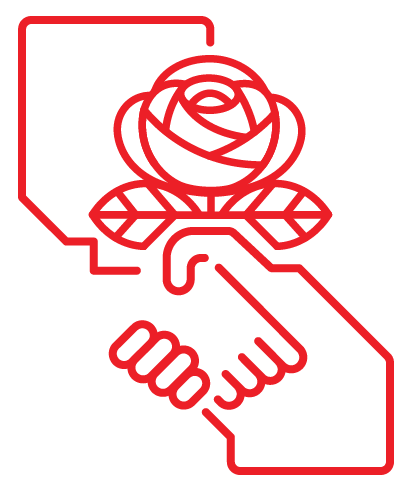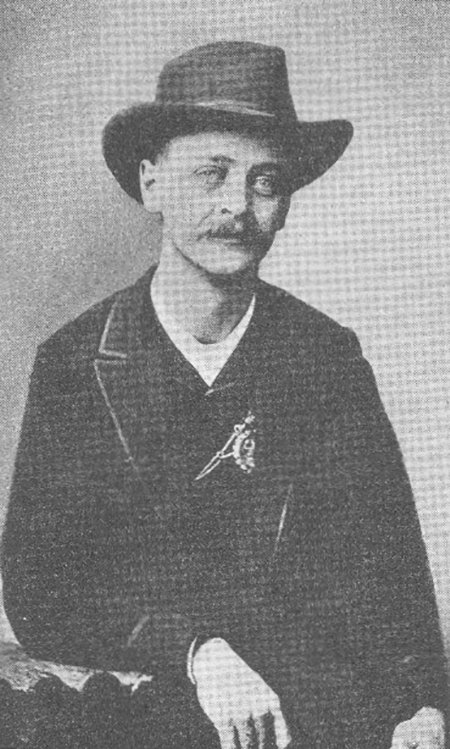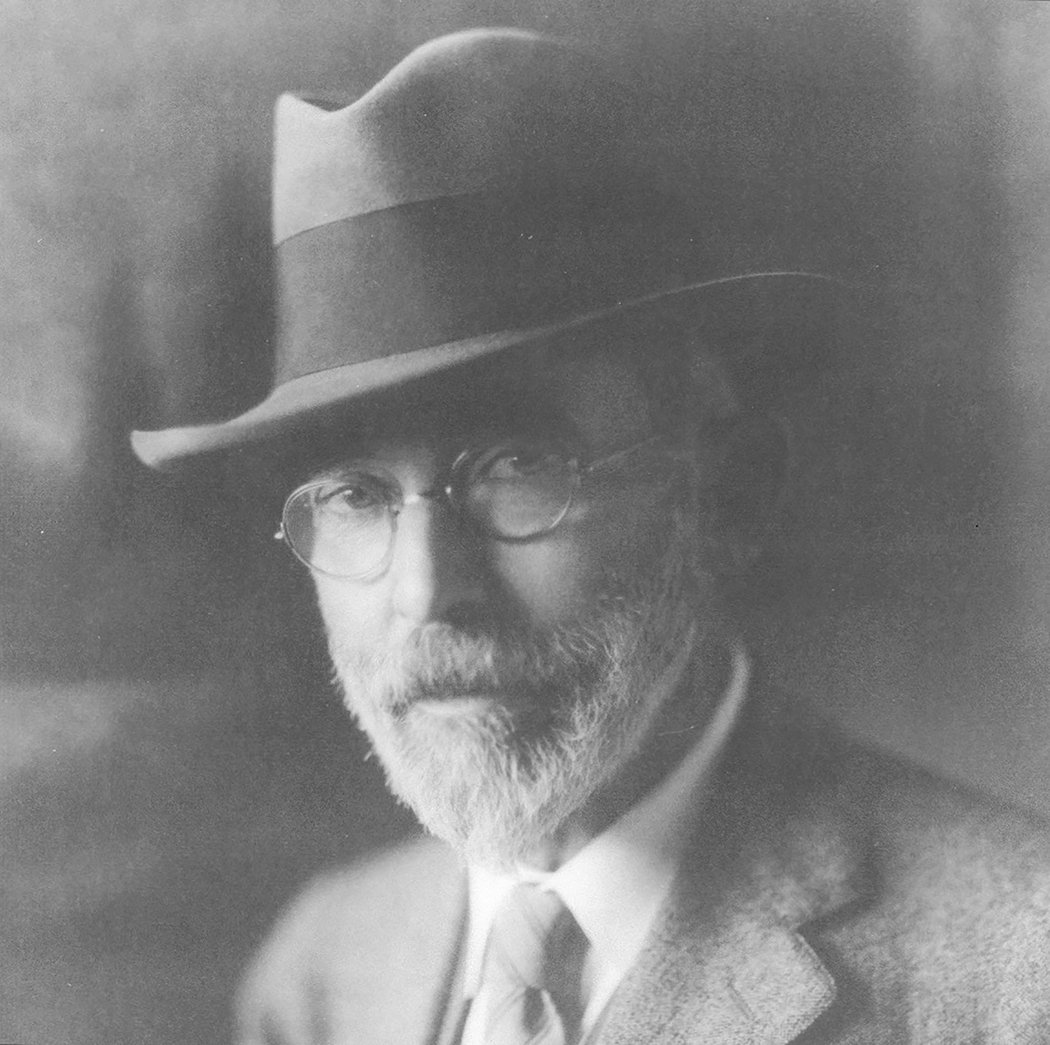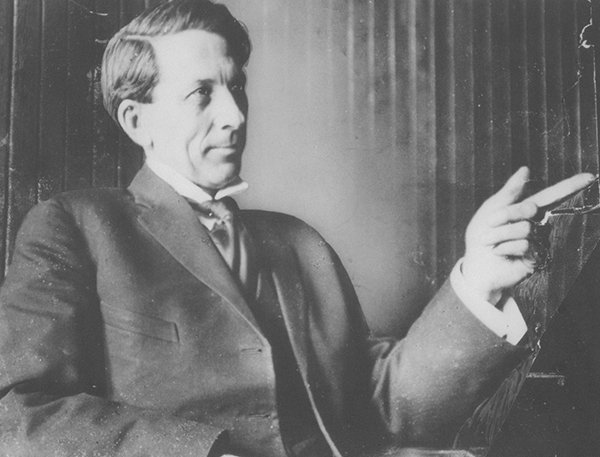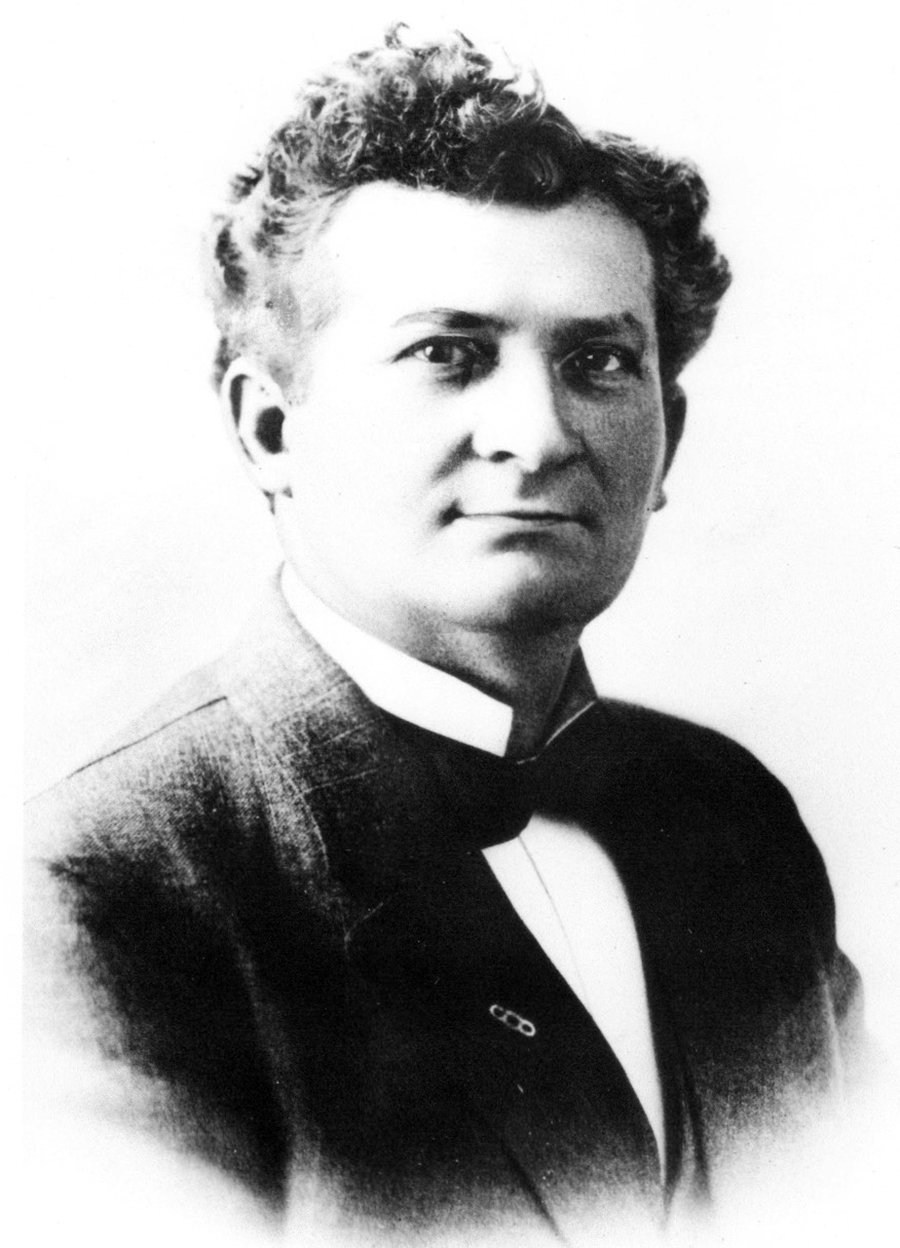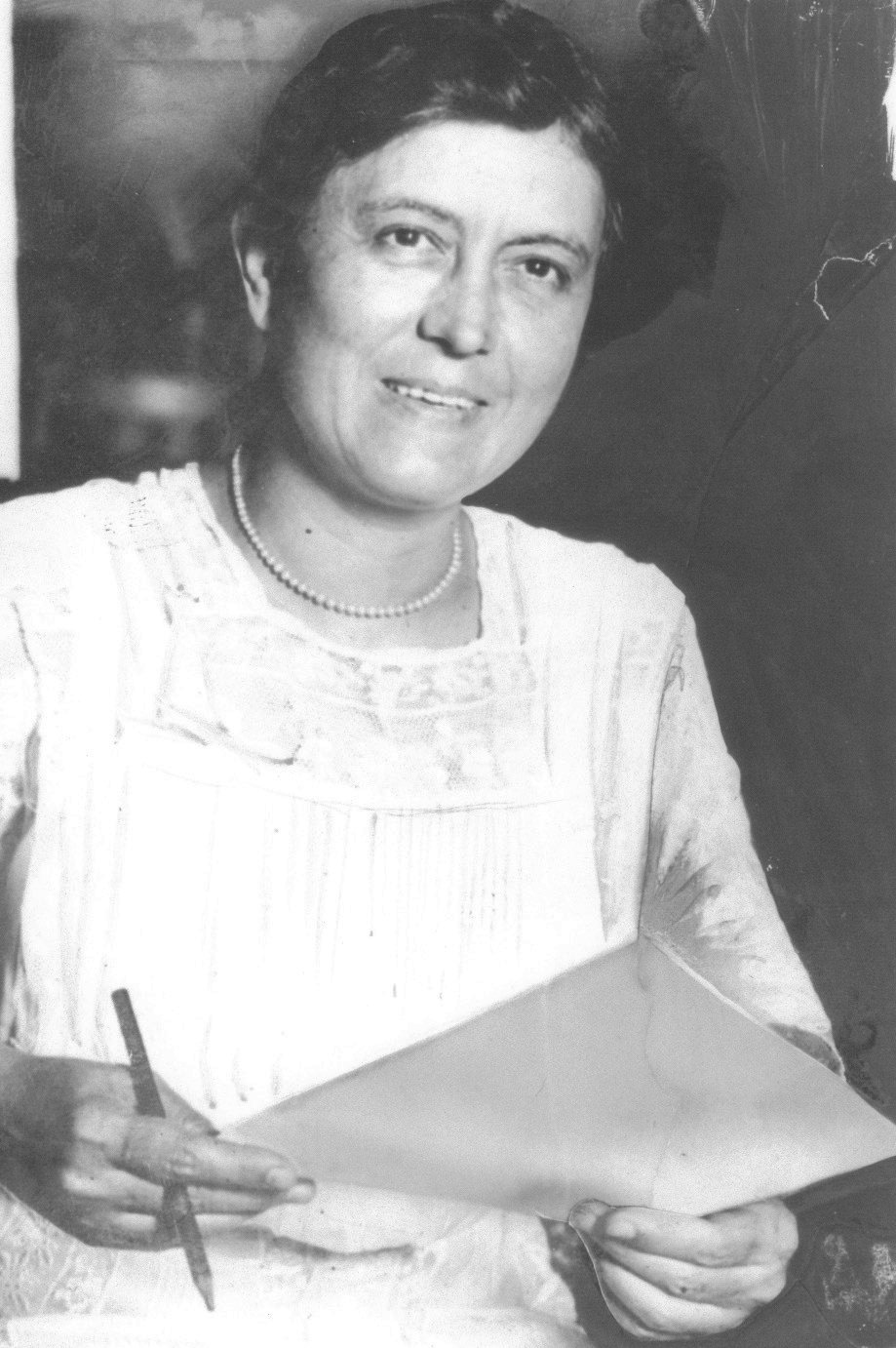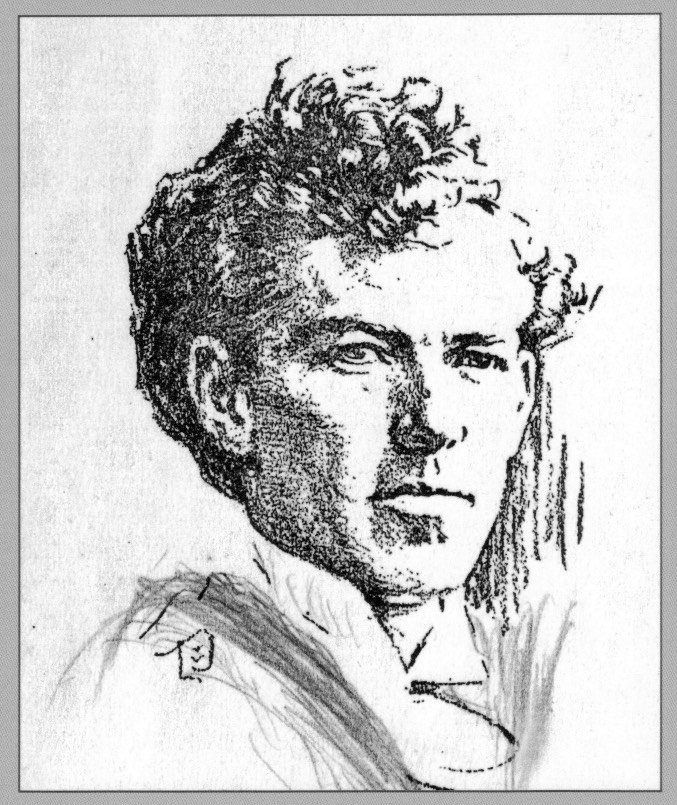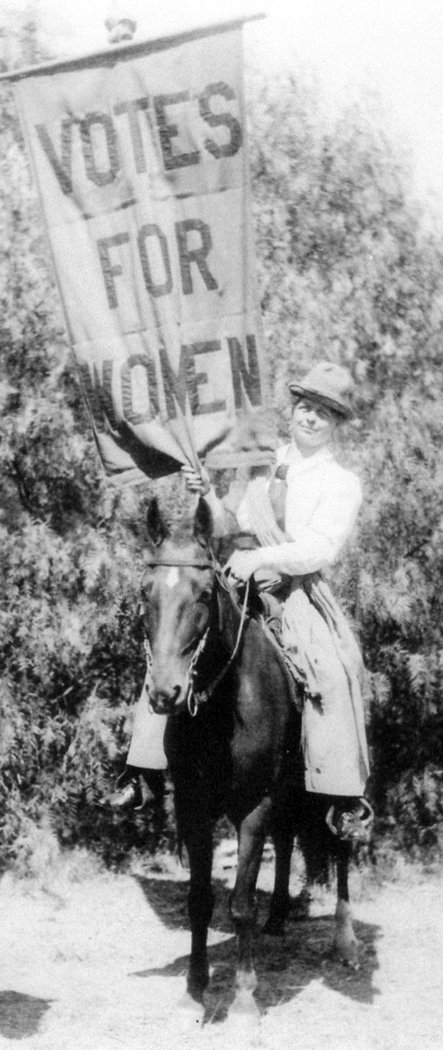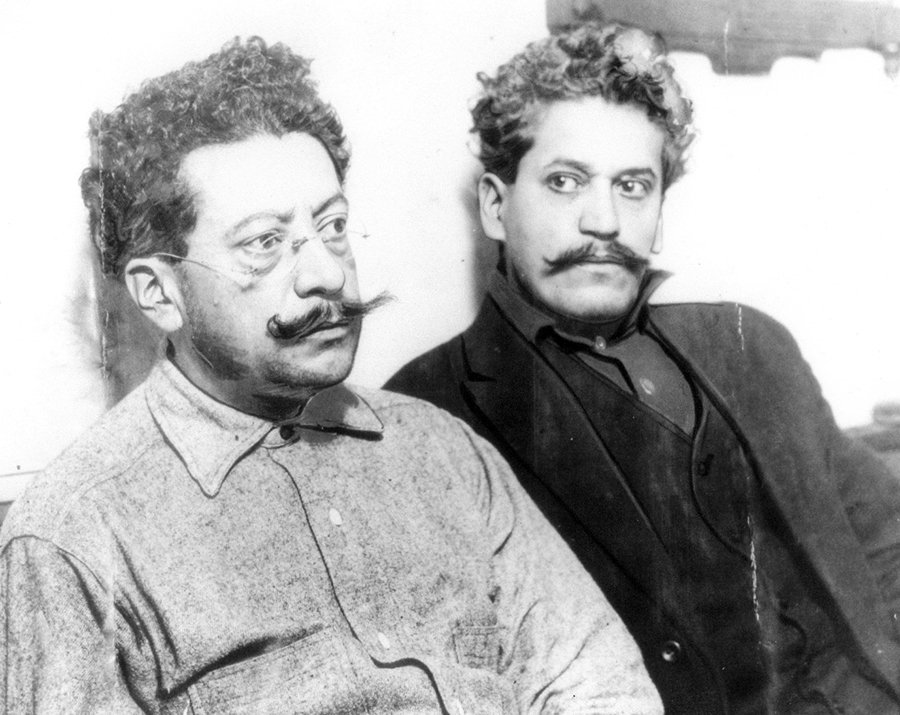A Socialist Party office in Los Angeles circa 1911
The California political left dates from the flight of refugees following the repression of revolutionary upheavals of 1848 in Europe. By 1869 German followers of Ferdinand Lassalle established a section of the International Workingmen’s Association, or First International, in San Francisco, just the second section formed in the United States. French- and English-language sections soon followed, but by the mid-1870s the English section dominated and foreign-language units of succeeding left organizations had a less significant role in California than they would have in eastern states.
The English section became the California branch of the Workingmen’s Party of the United States, actively organizing labor unions in San Francisco, most notably the Sailors Union of the Pacific. Socialist influence ebbed during the 1877 rail strike, when San Francisco’s working class was co-opted by Denis Kearney’s nonsocialist, anti-Chinese Workingmen’s Party of California. Burnette Haskell revitalized socialism in the 1880s. Under his direction, radicals were active in the Knights of Labor and Edward Bellamy’s Nationalist Clubs, briefly led the anti-Chinese movement, organized the Kaweah utopian colony, and created the short-lived but influential International Workmen’s Association.
A Brief History of Socialism in California
Burnette Haskell
Gaylord Wilshire
As with Haskell and his following, many Californians bridged the gap between utopianism, woman’s rights, and socialism. Women in the Kaweah colony themselves published a short-lived gender-conscious version of Haskell’s paper, Truth, as Truth in Small Doses. Older California women, sometimes relocated East Coast Yankee veterans of abolitionism, suffrage, and spiritualism, played a major role in the Bellamy movement and in Point Loma, a Theosophist-Socialist colony headed by Katherine Tingley. Bellamy Nationalism was especially strong in California, with Socialists in many leading positions in the local leadership. With many of the same followers, and under the slogan “Let the nation own the trusts,” Gaylord Wilshire (after whom Wilshire Boulevard in Los Angeles is named) conducted the first vigorous and well-funded American Socialist congressional campaign in 1890.
Job Harriman
Eugene Debs speaking to a crowd
Influenced by California’s largely agrarian economy, the Left from 1880 to 1900 was involved with farm protest movements, closely paralleling the path of socialism in other farm states. At the 1896 Populist National Convention, California Socialists sought to convert the party into a socialist organization and opposed the endorsement of Democratic presidential candidate William Jennings Bryan. With the collapse of Populism, California radicals turned to the Socialist Labor Party (SLP), running their first gubernatorial candidate, Job Harriman, in 1898. Harriman opposed Daniel DeLeon’s policy of dual unionism and worked actively in the secessionist movement that split the national SLP (1899). When SLP defectors united with Eugene Debs’s Social Democracy in a joint presidential ticket, Harriman received the vice-presidential nomination (1900).
The California SLP entered the newly formed Socialist Party of America (SP) virtually en masse. At the 1901 founding convention a Black California delegate, William Costley, successfully urged adoption of the only party resolution dealing specifically with Black rights passed by the SP during the first decade of its existence. During that early period, the California Left had an especially close relationship with the trade union movement. In a rare move, the American Federation of Labor and Samuel Gompers endorsed Job Harriman’s 1911 Los Angeles mayoral campaign. Running at the head of a fusion ticket that included socialists and unionists, Harriman and his slate led all candidates in the primary, benefiting from widespread labor unrest in the city. The platform pledged support to James and John McNamara, union leaders on trial for the dynamiting of the Los Angeles Times. When the McNamaras, with the agreement of their attorney, Clarence Darrow, unexpectedly entered a confession just days before the final election, the entire ticket went down to defeat.
Fred Wheeler
Estelle Lawton Lindsey
J. Stitt Wilson
Despite the shattering loss, the California SP not only survived but elected city council members Fred Wheeler and Estelle Lawton Lindsey (in LA) and three state assemblymen in subsequent elections. Socialist suffragists like Frances Nacke Noel were appointed to public commissions. Other notable victories occurred in Berkeley, where they elected Christian Socialist J. Stitt Wilson mayor (1911) and won control of the school board (1913).
Francis Nacke Noel
California Socialists who won elections generally came from the reformist element, relatively close to the trade union movement, that dominated the party before World War I. The party press and conventions were caught up in a constant debate between the reforming “opportunists” and the “impossibilists,” who shunned reform platforms and worked for “scientific socialism.” Throughout this prewar era the California SP grew rapidly in membership and voting strength. In 1902 California ranked first among the states, with sixteen hundred members. It was again first in 1910 with six thousand members, one-tenth of the national total. Membership peaked in 1914 with eighty-two hundred members and three hundred locals.
While the mainstream of the California Left was close to the American Federation of Labor, another segment supported the Industrial Workers of the World (IWW, or “wobblies”), which had significant strength in the lumber camps, maritime industry and among farm workers. In Los Angeles the IWW organized the campaign to free the Magon brothers, leaders of the Partido Liberal Mexicano, languishing in LA County jail on trumped up charges. They likewise organized free-speech struggles in Fresno (1910) and San Diego (1912) and were involved in the “Wheatland Hop Riot” (1913), where IWW members participated in a bitter struggle to improve conditions among migrant hop workers in the Sacramento Valley. This militancy was rewarded by a growing attitude on the part of left-wing socialists in support of industrial unionism—but also unleashed a retaliatory wave of repression.
Ricardo Flores Magón and Enrique Magón
By 1915 membership in the California IWW had grown to forty-five hundred. This growth of the Left, accomplished alongside a strong reform movement among California progressives, was stifled by the coming of World War I. California Socialists were as badly divided over the war as the Socialist movement elsewhere. War supporters included erstwhile Impossibilist Jack London and several party officials. Other California radicals actively opposed the war, among them Baptist minister Robert Whitaker, who was jailed for war resistance.
During the war the reformist leadership was replaced by a more radical group (including James Dolsen, Max Bedacht, and John Taylor) closely identified with the Bolshevik Revolution in Russia. At the 1919 Socialist convention in Chicago they took the California SP into the newly formed Communist Labor Party (CLP). Meanwhile, growing public animosity toward the California Left, beginning with the war, resulted in a series of repressive actions. Socialist Tom Mooney was convicted (on trumped up evidence) of bombing a preparedness-day parade in San Francisco (1916), and it was the rare labor demonstration for the next twenty years that did not feature a “Free Tom Mooney” banner. Forty-three Wobblies were tried and convicted in a mass trial at Sacramento (1918–1919) on federal charges involving the Espionage and Selective Service acts. In Oakland on Armistice Day (1919) a mob wrecked CLP headquarters.
“Free Tom Mooney!” banner at a labor demonstration
The state government moved against the Left, passing a broadly worded Criminal Syndicalism Act (1919) that made membership in a group that sought change in industrial ownership by force or violence a crime. Moving at first against members of the SP and then against the newly formed CLP, the state secured enough convictions to virtually drive the CLP out of existence. The U.S. Supreme Court (1927), in the case of CLP member Anita Whitney, found the act constitutional. Four decades later the court would void the act.
The Depression years saw a resurgence of activity and growth, particularly among Communists, who were singled out for repression under the criminal syndicalism law for their agitation on behalf of farm workers. Formation of the Congress of Industrial Organizations and increasing unionization of industry during the New Deal years also increased the Left’s influence, particularly that of Communists, in the labor movement.
"End Poverty in California!"
"End Poverty in California!"
Pamphlet for Upton Sinclair, Candidate for Governor of California
Some Leftists supported Upton Sinclair’s unsuccessful 1934 California campaign for the governorship on the Democratic ticket. The former Socialist captured the nomination on a platform that emphasized the state’s duty to provide work for the unemployed, but his “End Poverty in California” movement was considered too reform-minded by purists during the CPUSA’s Third Period to be considered a part of the Left, a judgment that many California radicals later regretted. Never again would a Left figure so nearly approach state leadership.
The same year a coast-wide maritime strike exploded out of wretched working conditions on the docks and ships, leavened by a syndicalist Wobbly and Communist workplace culture, capped by a four day general strike in San Francisco, from which emerged Harry Bridges, a naturalized Australian longshoreman, as California’s premier left labor leader. Bridges, who called himself a marxist but denied membership in the Communist Party, brought west coast longshoremen out of the AFL into the CIO-formed International Longshoremen’s and Warehousemen’s Union (ILWU).
Communist reorientation to the Popular Front plunged the Left into the liberal wing of the Democratic Party, where it played an influential role for several decades. Social agencies of the New Deal provided opportunities for some of the Left. Others gained positions in the administration of Culbert Olson, whose election in 1938 brought a Democrat to the governorship for the first time in the twentieth century. Olson also redeemed a campaign promise to free Tom Mooney.
But the modest political success of Democratic reformers weakened any general appeal that the Left might itself have made to the electorate. Instead, Communists concentrated their strength, by the 1940s, in the California Democratic Council, an influence group, in local community organizing and CIO councils.
Dissatisfaction with the postwar Truman administration led much of the California Left to support Henry Wallace’s 1948 presidential bid. Called the Independent Progressive Party (IPP) in California, it gave the Left a place on the ballot for the next two decades. During the forties and fifties the IPP was closer to the Communists than to the Socialists, who did not identify with it.
California Communists, in contrast to their eastern comrades, peaked in numbers and influence during the 1940s, and retained their strength well into the 1950s. With the daily People’s World, widespread influence in the ILWU among other labor organizations, and the capable state leadership of Dorothy Healey, they represented the more flexible side of American Communism.
Harry Bridges
Button for Dorothy Healey’s campaign
The Red Scare of the 1940s and 1950s was epitomized by three high-profile California events: the attack by the House Un-American Activities Committee in 1947 on leftists in the movie industry, most notoriously the investigation of the “Hollywood Ten”, but also extending to below-the-line craft workers; a series of efforts to smear and deport Harry Bridges; and the anticommunist loyalty-oath fight that rocked the public universities. Despite a general complacency on campuses in the 1950s, toward the end of the decade there was a revival of student awareness, particularly over campus racial discrimination and regulations that seriously limited free speech.
By the 1960s the IPP had lost its ballot status owing to declining voter strength, and the Left was further splintered by the emergence of numerous factions within both the Socialist and Communist camps. To unify the movement at the ballot box, the Peace and Freedom Party was organized in several states in response to the civil rights struggle and the Vietnam War. While it continued to function in California into the twenty first century, it remained largely a paper organization, utilized only at election time.
Bobby Seale (left) and Huey P. Newton (right)
As the civil rights movement split into two camps—one favoring a continued civil disobedience cum electoral orientation, and the other a more militant Black Power approach—Huey Newton and Bobby Seale founded the Black Panthers in Oakland in 1966. Responding to police brutality in their community, and the perceived limitations of the more mainstream civil rights movement, the Panthers organized armed neighborhood self-defense groups, created free school breakfast programs and community health clinics, and provided an alternative direction for African Americans frustrated with the slow gains of the mainstream movement. Within a few years, however, the Panthers were shattered by internal political conflict, heavy drug use and COINTELPRO incursions.
Hal Draper
A number of other New Left organizations emerged from the ferment of 1960s and 70s mass movements and the collapse of SDS in 1969. The majority were inspired by Third World liberation movements with a Marxist-Leninist orientation, while a smaller number adhered to Trotskyist principles. Of the latter the most significant and longest lasting tendency emerged out of the Independent Socialist Clubs, founded by ex-Socialists and Shachtmanites in Berkeley grouped around Hal Draper. This organization maintained a “third camp” socialist tradition, operated within a rank-and-file orientation in a number of unions, and later, as the International Socialists (IS), acted as midwife for Teamsters for a Democratic Union, and founded the Labor Notes magazine and Troublemakers schools for union activists.
One pole of attraction for these activists and their “pre-party formations” was the United Farm Workers of America, led by Cesar Chavez and Dolores Huerta. Its union organizing campaigns within the fields and boycott efforts in the cities of California were assisted by young leftists, many of whom by the 1970s were members of Left groups. But Chavez purged the union of most overtly socialist and communist elements in the mid to late seventies.
With the decline of the mass movements, most of the Marxist-Leninist organizations, stymied in their goal of vanguard party-building, became demoralized and by the late 1980s had shrunk greatly or disintegrated. Moving in a different direction was the Democratic Socialists of America (DSA), founded in 1982 with elements of both New and Old Lefts. DSA represented a merger of the labor-oriented Democratic Socialist Organizing Committee (DSOC), the largest of three shards of the old Socialist Party after it split over the Viet Nam War, and the New American Movement, a post-SDS socialist-feminist group. One of DSA’s early leaders was longtime California Communist Dorothy Healey. It distinguished itself from the M-L and Trotskyist groups in its willingness to work on behalf of “the left wing of the possible” in the Democratic Party.
Dolores Huerta
A faction within NAM opposed to working within the Democratic Party split before the merger and fused instead with Workers Power, itself a split from the International Socialists, to form Solidarity, which founded the journal Against the Current. Soon after the International Socialists regrouped with Solidarity under the name of the latter, maintaining the continuity of a small but influential “third camp” tendency on the Left.
Although the far left groups lost most of their membership and some disappeared by the 1990s, many of their individual cadre went on to find positions as leaders and staff within unions and community organizations. Left-led rank and file caucuses in public sector unions like United Teachers Los Angeles and private sector unions like the Hotel Employees and Restaurant Employees Local 2 in San Francisco contested for power and, over time, helped push the organizations in more progressive and militant directions.
Thus beneath the surface of the conservative political atmosphere in the latter decades of the twentieth century, the Golden State was germinating a crop of seasoned organizers, who, following the defeat of party-building, rethought their politics and retrenched to climb ladders of responsibility and power within more mainstream community groups, labor unions and electoral politics. The impact was felt in new movements against racism and homophobia, for immigrant rights and environmental action, and for progressive taxes to fund schools and services.
In communities such as Santa Monica and Santa Cruz, an amalgam of veterans of the Old and New Lefts produced durable political coalitions and elected many city officials. A subtly anti-corporate appeal to “slow growth” and preservation of green space drew constituents from across class and ethnic lines. In the 1990s the Los Angeles County Federation of Labor, led by a former UFW activist, Miguel Contreras, reached out to immigrants in their workplaces and neighborhoods, registered them to vote, and reshaped city and state politics. Alongside traditional Democrats elected to local and state office were to be found more than a few veterans of the New Left, including leaders of the state legislature.
People standing atop a shipping container in Oakland, California during the Occupy Wall Street movement
March for California’s 2012 tax the rich ballot measure
The Great Recession produced the Occupy Wall Street movement, and outside of New York the largest, most active and militant encampment was in Oakland. For a few months in summer and fall of 2011, hundreds of tents sheltered the unhoused, students, and newly unemployed workers from many industries, who organized themselves into various committees taking care of food, sanitation, security, culture and direct action in the streets. In this makeshift community political conversation flourished among people who normally wouldn’t have perceived themselves as having much to say to one another, and under the banner of “the 99%” a kind of class consciousness began to jell, culminating in a massive demonstration of 30,000 people halting work on the Oakland docks to protest specific acts of police violence and growing economic inequality in general.
Although no formal political organizations emerged from the Occupy movement, its insights into economic inequality represented a new public awareness of the erosion of the California Dream of upward mobility, which fueled a statewide ballot victory for progressive income taxes, Proposition 30, in 2012. The coalition that led this campaign included key leaders who had come up through the New Left and brought their politics with them into more mainstream labor and community organizations, pushing them to embrace what common political wisdom had until then deemed “impossible”—taxing the new plutocracy’s enormous income and wealth to fund the public sector. And Occupy activists, bulldozed from their encampments and seeking outlet for their new political insights, provided some of the energy for grassroots electioneering.
The same conditions, unaddressed by neoliberal politics as usual, only worsened over the next few years, and the disenchantment felt by young people especially at their diminished prospects fed the campaign by Vermont Senator Bernie Sanders for president in 2015. Although running under the banner of the Democratic Party, Sanders was explicit in campaigning as a socialist, introducing a consolidation of the Occupy analysis of inequality into a social democratic framework critiquing unfettered capitalism, and bringing “socialism” back into mainstream discourse for the first time since the middle of the twentieth century.
When Sanders lost the nomination to Hillary Clinton, disappointed young people flooded into the DSA by the thousands. In California small chapters of a few dozen mostly older activists in Los Angeles, the Bay Area and other larger cities suddenly found themselves holding meetings with hundreds of young people. New chapters popped up in small towns and college campuses across the state.
Engaging in electoral politics on the local and state level, the newly minted socialists also explored the history of the left in study groups, sought employment in unionized occupations, and grappled with the traditional issues involved in how contemporary radicals might engineer a transition to another economic and social system. Debates familiar to socialists from other eras arose for the first time in decades—electoralism versus workplace organizing, orientation to rank and file caucuses versus support for progressive union leaders, propaganda versus reform work that might grow into transitional demands. DSA members walked picket lines in large numbers in strike support for hotel and grocery workers in 2018 and teachers in Los Angeles and Oakland in 2019.
A banner drop for Prop 15 by East Bay DSA in 2020
May Day demonstration in San Francisco, California
When Sanders ran again in 2019-2020, California DSA chapters were all in, staffing the phone banks and precinct walks that powered his statewide primary win, alongside local election endorsements and work. And when he lost the nomination to Joe Biden, his followers again swelled DSA’s ranks. Well over ten thousand Californians belonged to DSA by mid-2020—more than the entire national membership in 2015. While staying away from an endorsement for Biden, California DSA chapters endorsed and worked for local and state socialist candidates for office and ballot measures, such as Proposition 15 (closing a commercial tax loophole) in the fall election.
Today dozens of elected officials proudly proclaim their DSA allegiance in city councils, school boards and other local offices. One assemblyman in the state legislature, Alex Lee in San Jose, is a DSA member, as are a growing number of young trade unionist activists and staffers. With the largest DSA membership outside New York, California retains its prominence as a state that continues to grow socialism alongside its other industries.
[Excerpted from The ENCYCLOPEDIA OF THE AMERICAN LEFT, third edition (forthcoming, Verso).]
Further Reading:
A History of the Labor Movement in California by Ira Cross
University of California Press, 1935.
From Mission to Microchip: A History of the California Labor Movement
by Fred Glass University of California Press, 2016.
California Red: A Life in the Communist Party
by Dorothy Healey and Maurice Isserman. University of Illinois Press, 1993.
State of Resistance: What California's Dizzying Descent and Remarkable Resurgence Mean for America's Future
by Manuel Pastor. New York, New Press, 2018.
Native Daughter
by Al Richmond. San Francisco: Anita Whitney 75th Anniversary Committee, 1942.
The Indispensable Enemy: Labor and the Anti-Chinese Movement in California.
Saxton, Alexander. UC Press, 1971
Communism in California, 1919–1924.” Science and Society 34 (Winter 1970)
by Ralph E. Shaffer
The I.W.W. in California, 1905–1931.
by Hyman Weintraub. Master’s thesis, University of California, Los Angeles, 1947.
—Ralph E. Shaffer and Fred B. Glass
